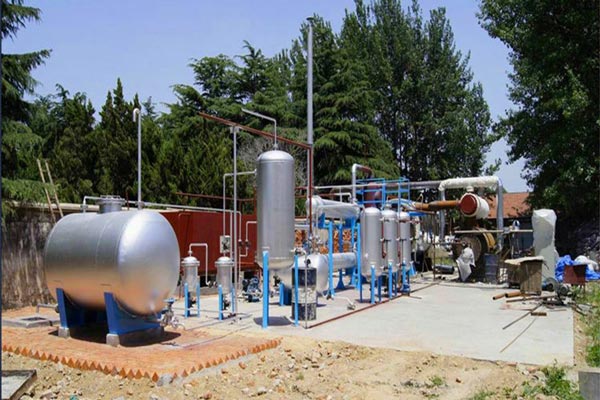Thanks to advanced recycling processes, shredded tyre waste can be regenerated into tyres with properties similar to those of the original material. This technology allows recycling materials from shredder residue. Shredder residue is typically a mix of polymers (rubber, polyurethane foam, and tyres). About 500 lb of shredder residue is recovered from each ton of metal from a shredding facility. However, shredder residue has in the past ended up in landfills. The reason being shredder residue possess corresponding shapes and densities, making it hard to extract enough material with the required purity for scrap processors. Find more about tyre recycling plant cost here.

pyrolysis plastic waste recycling machine
The new technology allows for efficient separation of polymers of equivalent densities. This new technology is called froth flotation. The waste tyre recycling machine price for this technology is high. It is impractical to recover recycling materials in one stage due to the complexity of shredder residue. So, the solution is making use of a mechanical-separation system which makes use of commonly used shredder equipment to separate polymers and metals into preconcentrates that are more manageable.The small pyrolysis machine can separate materials in various sequences, but a typical one begins with the elimination of large metallic and polyurethane foams, including rocks.
Vinyloop Process PVC recycling in the United States will likely continue based on the mechanical methods of grinding material into places and powder, then reusing it to manufacture products that resemble much like the originals. The downside is this method does not break the polymer chain. The Vinyloop process does break the polymer chain. With the Vinyloop process, separation of PVC from polyester fiber, natural textiles, rubber, metals, polyurethane foam, and other materials through selective dissolution is possible.
The shredded tyre waste is turned into foam using the physical processes: washing, cutting, grinding, milling and homogenization. The foam is then fed into the Vinyloop. The next step is dissolution. A solvent is used to discriminately dissolve the PVC compound, leaving the secondary material.
Separation processes include centrifuging, decanting, and cycloning. To eliminate all the dissolved PVC compound, secondary material from separation is washed with pure hot solvent.Adding additives allow the properties of the output to be adjusted. This is called precipitation.Over 99.9% of the solvents are recovered by running solvents in a closed loop, then separated from the water in a multistep process using condensation and density separation. Get waste tyre to oil plant price here.
Overall, about one-third of the shredder residue is regained as a polymer accumulation, which is ground to an average particle size.Generally, the technology recovers major tyres from shredder residues. In a froth-flotation mechanism, polymer accumulation goes through a sequence of tanks. The interaction of the solutions in each tank allows regaining of a certain automotive tyre. Get high quality pyrolysis machinery for sale here.